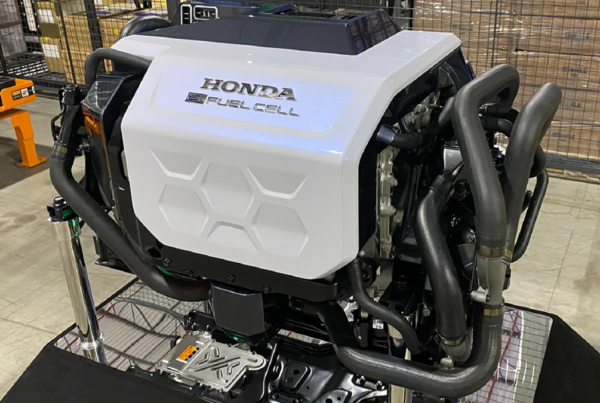
- Plane makers and engine manufacturers have invested about $4.5 billion in R&D related to the use of hydrogen for aircraft.

Hemant Mistry of Iata says governments must consider the aviation sector’s needs in plans for the use of hydrogen and renewable energy. Photo: Iata
The global aviation industry could use 15 per cent to 20 per cent of the world’s projected hydrogen supply of 600 million tonnes by 2050 for the production of sustainable aviation fuels (SAFs) and to power new aircraft, according to the International Air Transport Association (Iata).
The industry is projected to use about 100 mega tonnes of hydrogen for the production of SAF and 20 mega tonnes for hydrogen-powered aircraft, if they enter into service by 2035, as airlines pursue their goal of net zero emissions by the middle of the century, Hemant Mistry, Iata’s director of energy transition, said in Geneva.
“The scale-up of hydrogen to address aviation requirements will be necessary, but when we consider the use of hydrogen for aircraft propulsion only, it is only 3 per cent of the forecast global supply by 2050,” Mr Mistry said.
“Aviation must be considered in different country plans for hydrogen and renewables scale-up.”
Hydrogen is one of several competing technologies that could help the aviation industry achieve its goal of becoming net zero by 2050.
Last month, the UK-based Rolls Royce said it completed a successful trial of a jet engine powered by hydrogen fuel. The ground test used green hydrogen created by wind and tidal power.
Last week, European plane maker Airbus said it is developing afuel-cell engine as part of wider plans for a hydrogen-powered aircraft that is scheduled to enter service by 2035.
While hydrogen has three times the energy density offered by jet fuel, it requires 4.5 times as much volume for storage in liquid form, which has to be below minus-250°C.
This presents new difficulties and opportunities for the decarbonisation of aviation, Mr Mistry said.
Refuelling the aircraft will be challenging and different from refilling conventional aircraft, he said.
On the other hand, the wings can be lighter and thinner with better aerodynamics because the fuel will not be stored in the wing as it is at present.
The use of hydrogen in aviation could accelerate with the expected introduction of small retrofitted aircraft seating 19 to 50 passengers by 2030, Mr Mistry said.
After 2035, Airbus plans to bring a clean-sheet hydrogen-powered aircraft, which could start scaling up the requirements for the fuel.
Major plane makers and engine manufacturers worldwide have invested about $4.5 billion in research and development related to the use of hydrogen for aircraft, according to Iata.
The trade body identified 15 airlines that have expressed interest in hydrogen, either by investing in technology companies, or by signing agreements with developers, or even trying to solve some challenges, Mr Mistry said.
Iata also tracked 15 airports in different stages of development, with some already using hydrogen for non-aircraft uses, some conducted feasibility studies and others have hydrogen deployment plans with hydrogen providers and aircraft manufacturers.
Iata forecasts a “sharp reduction” in the cost of hydrogen production after the maturity and increase in green hydrogen facilities and after the cost of renewable energy production drops, Mr Mistry said.
SAF ‘tipping point’
SAF, which Iata sees as the most significant contributor to reaching the net zero goal, requires a major boost in production from the current miniscule levels.
SAF production will reach at least 300 million litres in 2022 — a 200 per cent increase on 2021 production levels of 100 million litres, according to Iata. Its more optimistic calculations estimate total production in 2022 could reach 450 million litres.
However, SAF’s production will be only 0.1 per cent of total jet fuel output globally this year, up from 0.04 per cent last year, Iata said.
“Airlines used every last drop of available SAF, even at very high prices, so what we need urgently is continued production ramp-up,” Mr Mistry said.
Iata identified a “tipping point” for SAF production, a target of 24 million tonnes (30 billion litres), towards reaching its goals.
Starting from the low baseline of SAF in 2021, production needs to scale up by 4,500 times to reach the industry’s 2050 ambition — but if the 2030 tipping point is reached, the industry has two decades to scale up SAF use 15-fold, a more manageable target, according to Mr Mistry.
The trade body called on governments to incentivise the production of SAF and take into account the needs of the aviation industry.
Green financing
Airlines will require financing to support their energy transition, such as investing in more efficient aircraft and the purchase of SAF.
To access finance, the airlines must show financial institutions their ESG (environmental, social and governance) metrics in a reliable and transparent way so that lenders can make appropriate decisions.
But the current sustainability reporting data requirements are highly “fragmented”, said Emi Mima, Iata’s manager of sustainable finance.
Iata is working on an ESG Metrics Guidance for airlines to help them on sustainability disclosures, increase trust with lenders and ensure access to green financing, Ms Mima said.
The trade body expects to publish the report on its website by the beginning of 2023, she added.
Higher airfares owing to energy transition
Iata’s director general, Willie Walsh, said that airfares will increase as the industry moves to achieve its goal of net zero by 2050.
Passengers faced higher ticket prices this year as airlines passed on the higher prices of conventional jet fuel to customers.
“You cannot expect an industry making on average $1 profit per customer to absorb the increases we’ve seen,” Mr Walsh said.
“Going forward, as we see increases in carbon costs … there has to be an impact on ticket prices as the industry transitions to net zero. The airlines cannot absorb increased costs.”
SOURCE: N
Read the most up to date Fuel Cell and Hydrogen Industry news at FuelCellsWorks




